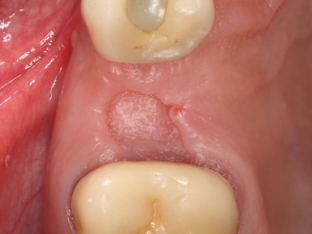Tooth extraction is a rather unpleasant procedure for everyone. However, tooth extraction helps to avoid complications and serious diseases in the oral cavity, as well as eliminate toothache. After tooth extraction, the patient expects the pain to stop and the condition of the oral cavity to normalize. But in some cases, the pain does not disappear after the extraction of the tooth, but, on the contrary, intensifies. This is a sign of alveolitis or dry socket. This complication occurs in 5% of patients after tooth extraction. How does a dry socket manifest itself? How can a complication after tooth extraction be eliminated?
What is a dry socket? When is it formed?
After a tooth is extracted, a cavity called a socket is formed in its place, which contains a blood clot. The blood clot protects the nerve endings and bone from physical impact. This clot can dissolve or fall out after a few days, exposing nerve endings and bone to food, air, and anything else that enters the mouth. Read more about dry socket symptoms on estet-portal.com. This condition is dangerous by infection and the appearance of severe pain, which can last for a long time. Some groups of people are particularly susceptible to dry socket formation.
Who is at risk for dry socket:
- patients after wisdom tooth extraction;
- smokers;
- patients who do not systematically care for the oral cavity;
- patients with complications during tooth extraction;
- patients with a history of dry socket;
- women who take birth control;
- A blood clot may fall out after frequent rinsing or spitting, or after drinking through a straw after a tooth extraction.
Clinical manifestations and treatment of dry socket
At the site of the extracted tooth, instead of a blood clot, a bone is visualized, and the hole itself looks dry.
About 2 days after the extraction of the tooth, acute pain appears, which intensifies and radiates to the ears. Others notice bad breath, and the patient notices a change in taste sensations.
NSAIDs are recommended for pain relief. If these drugs are not enough, your doctor may prescribe prescription drugs. Along with this, the dentist cleans the hole by removing food debris, and then fills the cavity with a swab with a special gel. In some cases, with a dry socket, antibacterial agents are prescribed to prevent infectious complications, and rinsing with salt water is also recommended. The healing process takes up to two weeks on average, after which the implant can be placed.

Prevention of the development of complications after tooth extraction – dry socket
To prevent dry socket formation, smoking should be avoided as much as possible after tooth extraction.
If a woman is taking hormonal contraceptives, it is important to inform the dentist and have the tooth extracted during the period when estrogen levels in the blood are at a minimum, as it affects blood clotting.
After tooth extraction, it is not recommended to rinse your mouth and drink liquid through a straw. If you need to rinse your mouth, you need to do it with caution. By following simple rules, you can avoid the development of such a complication after tooth extraction as a dry socket, and speed up the healing process of a wound in the oral cavity.






Add a comment